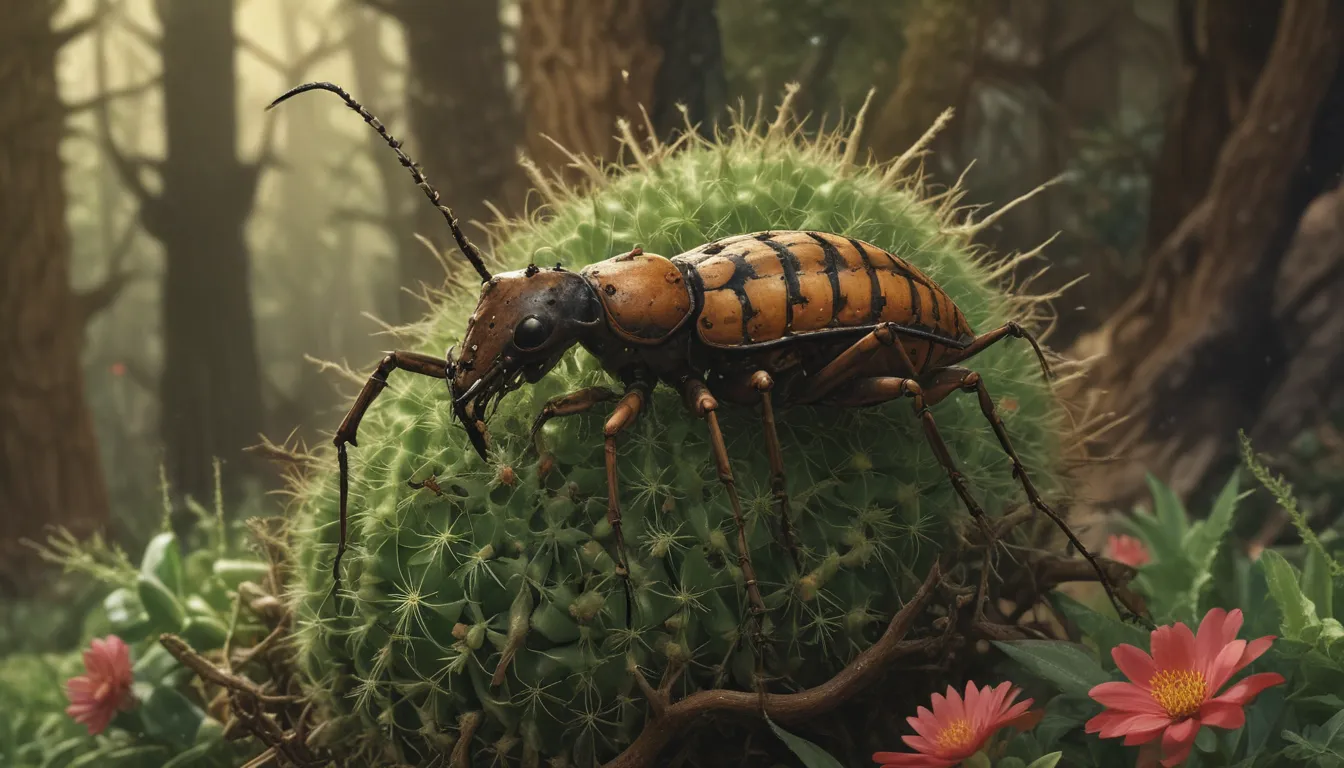A Comprehensive Guide to Identifying and Managing Cactus Longhorn Beetles

Cactus longhorn beetles, belonging to the Moneilema species, are a fascinating yet potentially destructive insect in the vast world of the Cerambycidae family. These beetles are a vital part of the ecosystem, but when they infest your precious cacti, they can wreak havoc on your desert landscape.
In this detailed guide, we will explore the ins and outs of cactus longhorn beetles, from their identification to infestation control. By the time you finish reading this article, you will be well-equipped to tackle any issues that may arise with these unique insects.
What You’ll Learn
In this article, we will cover various aspects related to cactus longhorn beetles:
- Identification: Learn how to recognize these beetles amongst other desert insects.
- Host Plants: Understand which cacti species are susceptible to infestations.
- Life Cycle and Behavior: Delve into the fascinating world of these beetles’ reproductive cycle and habits.
- Signs of Damage: Identify the telltale signs of infestation on your beloved cacti.
- Infestation Control: Discover effective methods to manage and control cactus longhorn beetle populations.
Let’s begin by understanding how to identify these intriguing insects.
Identification
When it comes to cactus longhorn beetles, their appearance is a unique blend of mystery and beauty. These beetles typically have shiny black shells with white mottling, standing out amidst the desert landscape.
Measuring between 13 and 37 millimeters in length, these beetles have a formidable posture with prominent antennae and six splayed legs. Their inability to fly, fused wings, and grub-like larvae make them a distinct species within the insect kingdom.
Different species of cactus longhorn beetles can be found in various regions, such as Arizona and Texas, each with its unique characteristics and appearance.
Host Plants
Understanding the host plants of cactus longhorn beetles is crucial in identifying potential infestation sites. These beetles primarily feed on two species of cacti, prickly pear, and cholla. Additionally, they may also target other cacti species like little barrel cacti and saguaro.
Being aware of the preferred host plants can help you safeguard your cacti from potential beetle damage.
Life Cycle and Behavior
The life cycle of cactus longhorn beetles is a fascinating journey from egg to adult. Active during the spring and fall, these beetles rely on seasonal monsoon rains to trigger their mating and egg-laying activities.
Females lay their eggs near the base of cacti stems, and the emerging larvae burrow deep into the plant’s flesh to feed. As they grow, they transform into pupae before emerging as adults to restart the reproductive cycle.
Understanding the behavior of these beetles can help you anticipate and prevent infestations in your cacti garden.
Signs of Damage
Detecting signs of cactus longhorn beetle damage early can save your beloved cacti from severe harm. Look for color changes, soft spots, and irregular stem margins as indicators of potential infestations.
Adult beetles feed on the surface foliage, while larvae hollow out stems, causing irreversible damage that may lead to plant death. Prompt action is essential to prevent widespread destruction in your garden.
Infestation Control
When it comes to managing cactus longhorn beetle infestations, swift and decisive action is key. Instead of relying on natural predators, employing physical methods like tweezers can help you control beetle populations effectively.
Silicone-tipped tweezers are a valuable tool in battling cactus longhorn beetles. Their long handle and firm grip make it easier to remove adults from your cacti without causing additional damage.
Regular monitoring during the monsoon season and proper disposal methods can help you keep beetle populations in check and preserve the health of your cacti garden.
Concluding Thoughts
Cactus longhorn beetles are a unique and intriguing species within the insect kingdom. By understanding their identification, host plants, life cycle, and damage signs, you can effectively manage infestations and protect your cacti from harm.
We hope this comprehensive guide has equipped you with the knowledge and tools needed to tackle cactus longhorn beetles in your desert landscape. Remember, early detection and proactive measures are key to keeping these beetles at bay and preserving the beauty of your cacti garden.
If you have any tips or experiences to share regarding cactus longhorn beetles, feel free to leave a comment below. Together, we can create a thriving ecosystem where cacti and beetles coexist harmoniously.





